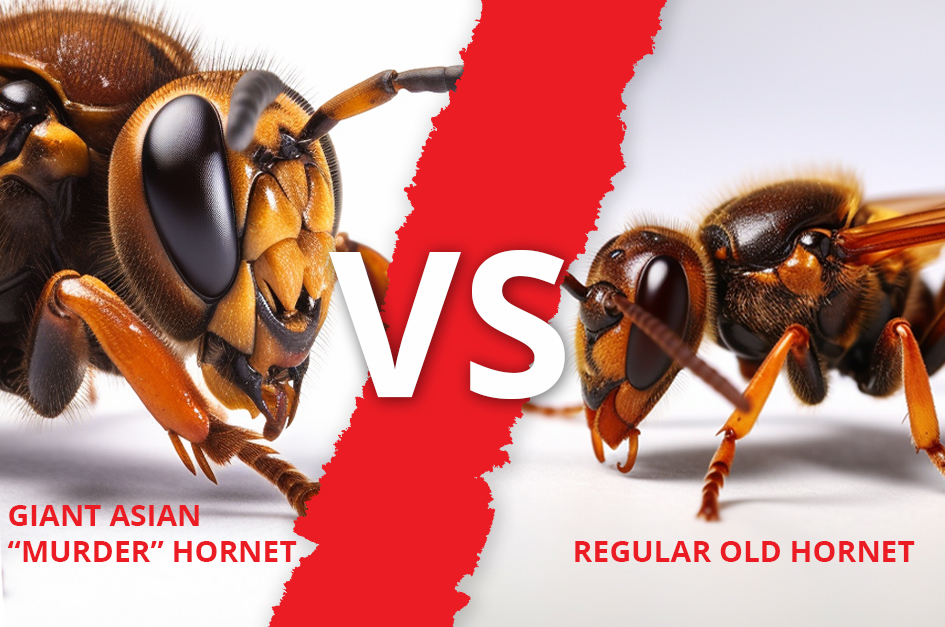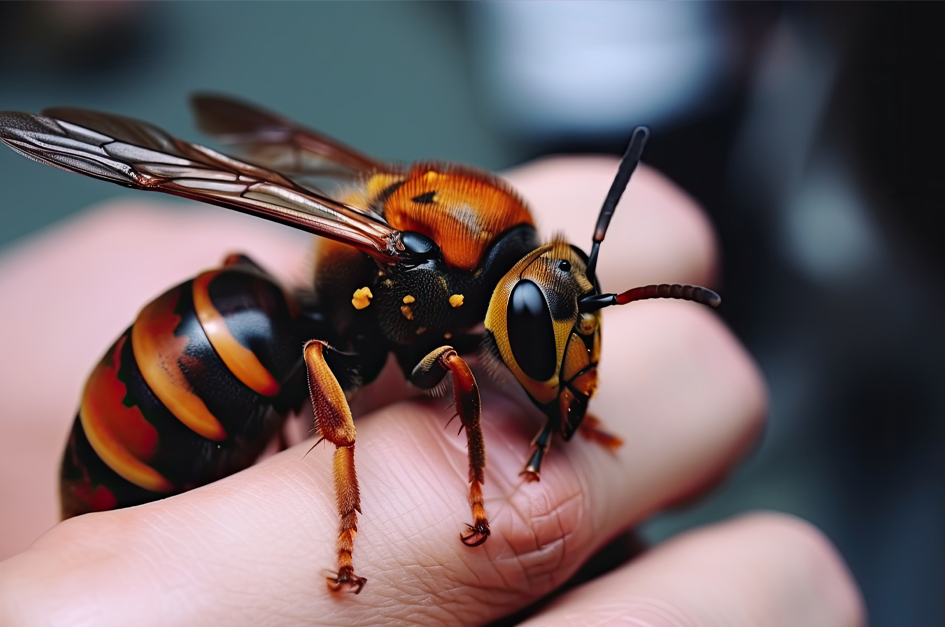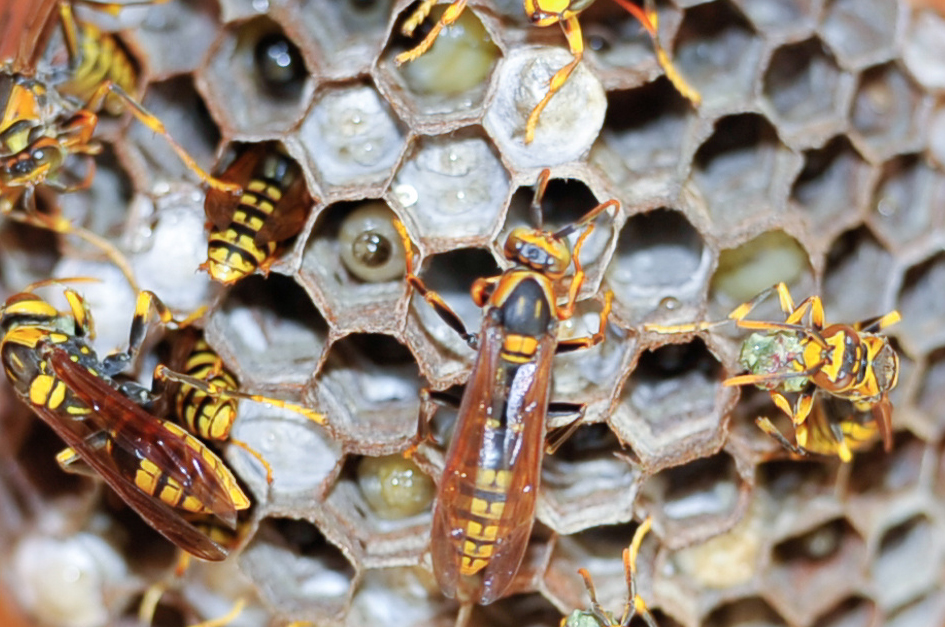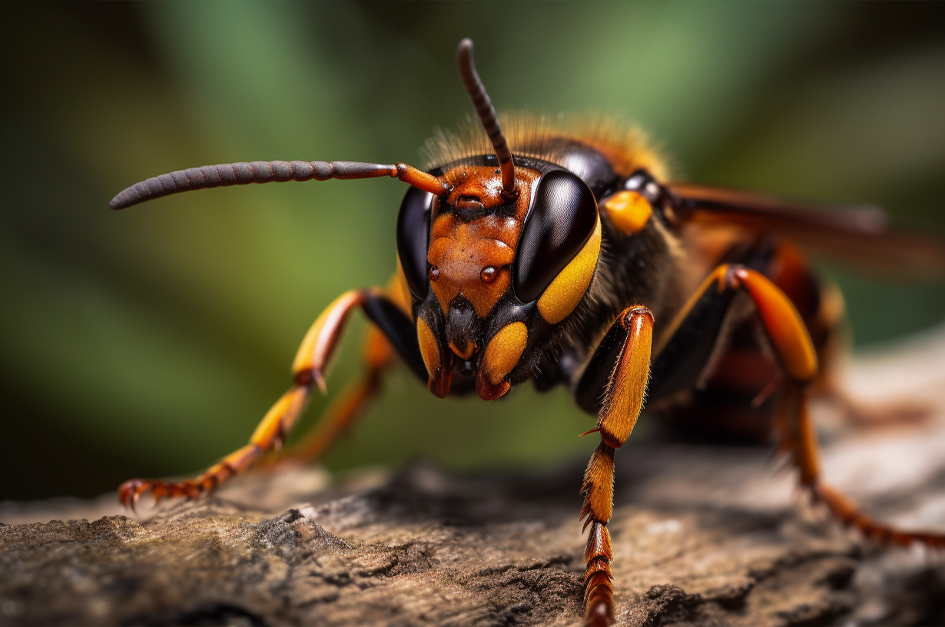What's New At Evans Pest Control
Learn more about Evans Pest Control capabilities
Asian Giant Murder Hornet Vs. Regular Old Hornet
The Asian Giant Murder Hornet Vs. Regular Old Hornet
The Asian Giant Hornet (Vespa Mandarinia), commonly known as the "Murder Hornet," is highly aggressive, and huge. While native to East Asia, this formidable insect has made its way to the United States, posing a range of dangers. Let’s compare The Asian Giant Hornet to Hornets in Philadelphia.
Comparing the size of The Asian Giant Hornet with common Bald-Faced Hornet found in Philadelphia. The Asian Giant Hornet is much bigger, and measures more than 2 inches in length, making it significantly larger than Hornets in Philadelphia that come in around 1 inch. The scale of The Asian Giant Hornet would make a conflict between the two a no contest battle for the much smaller Bald-Faced Hornet typically found in Philadelphia.
https://youtube.com/shorts/MOtA6TGQfs8?feature=share
Range within the United States:
Since its initial detection in Washington State in 2019, The Asian Giant Hornet has primarily been found in the Pacific Northwest region. However, sightings have been reported in other parts of the United States, albeit in limited numbers. The Hornets are believed to have been introduced through international cargo shipments, emphasizing the importance of monitoring and prevention efforts across the country.
Aggressive Attacks And Stinging: Asian Giant Hornets possess a potent venom and powerful stingers capable of piercing regular protective clothing. Their stings can be extremely painful and, in some cases, fatal, especially for those who are allergic or receive multiple stings.
Threat to Bee Populations: These Hornets are notorious for attacking Honeybee colonies, decimating entire hives within a short span of time. The loss of Honeybees not only affects honey production but also disrupts pollination, posing a threat to agricultural ecosystems.
The Human Impact: Asian Giant Hornet can become aggressive towards humans, especially in defensive of their nests. Their large size and venomous stingers make them a potential danger, particularly to individuals who may unknowingly come into contact with their nests.
Nesting Behavior: Asian Giant Hornets typically build their nests underground, often utilizing abandoned rodent burrows. These nests can house thousands of hornets and are meticulously constructed using chewed-up plant material mixed with saliva.
Hunting Techniques: The Asian Giant Hornet is relentless, and a formidable predator known for its hunting skills. They primarily prey on other insects, particularly Bees and Wasps. A single Hornet can decimate an entire Honeybee hive by decapitating Bees and bringing the protein-rich thoraxes back to their nest to feed their young.
Physical Characteristics: The Asian Giant Hornet is easily recognizable due to its distinctive appearance. It has a large, robust body with a dark brown or black coloration. The head is orange or yellow, featuring prominent mandibles and compound eyes. Its wings are translucent and can span up to 4 inches in length when fully extended.
Seasonal Activity: Asian Giant Hornets are most active during the summer and early fall. Their colonies reach their peak size during this period, and their foraging activity intensifies. It is crucial to be cautious during these months to avoid potential encounters.
Control and Management: Efforts are underway to control and manage the Asian Giant Hornet populations in the United States. The primary strategies include trapping, nest destruction, and monitoring programs. By identifying and eradicating Hornet nests, authorities aim to prevent the establishment and further spread of these invasive insects.
Remember, if you encounter an Asian Giant Hornet or suspect its presence, it is essential to report it to local authorities or entomology experts. Do not attempt to handle or eliminate these Hornets on your own, as they can be dangerous.
The presence of the Asian Giant Hornet in the United States is a concerning development, considering the risks they pose to human safety and ecosystems. It is crucial for authorities, researchers, and the public to remain vigilant in monitoring its spread and taking appropriate measures to control its population. By raising awareness and understanding the dangers associated with the Asian Giant Hornet, we can work towards minimizing its impact on both local ecosystems and human well-being.
Gallery




Get a Free Phone Consultation
Having a bug problem? Talk to a professional right now!
Yes, We Can Help
Drop us a message and we will help you today!
